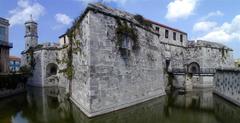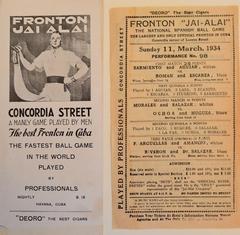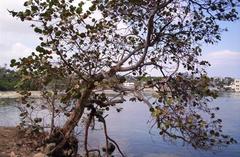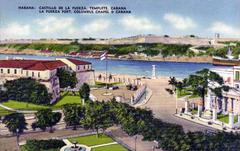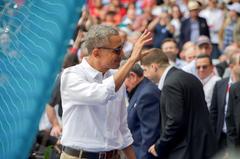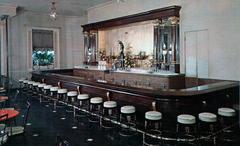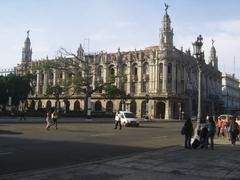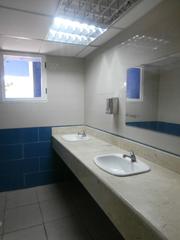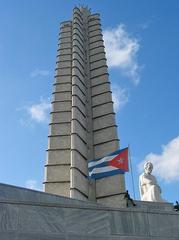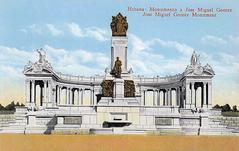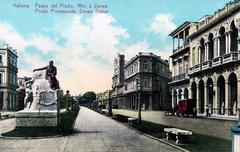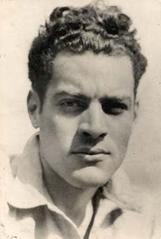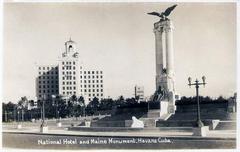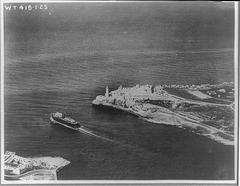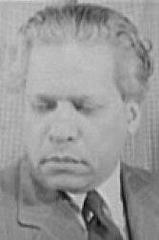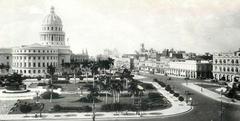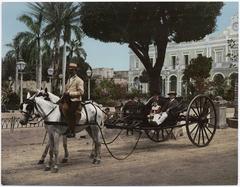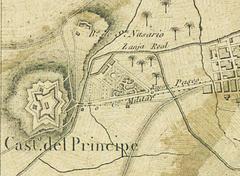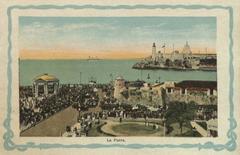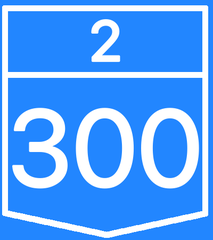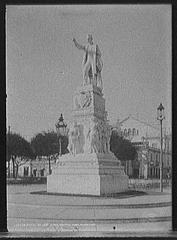
Palace of the Revolution Havana: Visiting Hours, Tickets, and History
Date: 04/07/2025
Introduction: The Palace of the Revolution’s Historical and Cultural Significance
The Palace of the Revolution (Palacio de la Revolución) in Havana is a defining symbol of Cuba’s modern political history and national identity. Commissioned in 1943 by President Carlos Prío Socarrás and completed in 1957 under architect Max Borges, its original purpose was to serve as the Supreme Court and Office of the Attorney General. However, following the Cuban Revolution’s success in 1959, the building’s role shifted dramatically. By 1965, it became the operational headquarters for the Cuban presidency and central government, embodying the institutionalization of revolutionary power. Its placement within the vast Plaza de la Revolución—one of the world’s largest public squares—reinforces its political and symbolic importance, hosting major rallies, speeches, and national ceremonies.
While the Palace itself remains an active government building and is not open for public interior tours, visitors are invited to explore its monumental exterior and the surrounding Plaza de la Revolución. The plaza, adorned with revolutionary murals and monuments such as the José Martí Memorial and the iconic steel images of Che Guevara and Camilo Cienfuegos, offers a powerful glimpse into Cuba’s revolutionary ethos and architectural heritage. This guide provides an in-depth overview of the Palace’s history, architecture, visitor information (including hours and ticketing), practical travel tips, nearby attractions, and answers to common questions. For further historical background, visit Wikipedia, Battleground History, and Under30Experiences.
Contents
- Origins and Construction
- Transformation After the Cuban Revolution
- Political and Symbolic Significance
- Architectural Features
- Visiting Information: Hours, Tickets, Accessibility
- Travel Tips
- Nearby Attractions
- Preservation and Legacy
- Timeline of Key Events
- Frequently Asked Questions (FAQs)
- References
Origins and Construction
The Palace of the Revolution traces its roots to the mid-20th century, designed during a period of significant political change in Cuba. Initially ordered by President Carlos Prío Socarrás in 1943, the project was conceived as a new seat for the Supreme Court and Attorney General’s Office. Architect Pérez Benoita created the original design, but construction commenced a decade later under Max Borges, culminating in 1957 (es.wikipedia.org).
Located in the planned Plaza de la Revolución José Martí, the Palace was part of a broader civic vision to create a central venue for national events and government affairs. The building’s imposing façade and spacious interiors were intended to project governmental authority and stability during a turbulent era.
Transformation After the Cuban Revolution
The Cuban Revolution of 1959 marked a pivotal change for the Palace. Initially, the government’s headquarters remained at the former Presidential Palace (now the Museum of the Revolution), but in 1965, under Fidel Castro and President Osvaldo Dorticós Torrado, Cuba’s executive offices moved to the newly completed Palace of the Revolution (es.wikipedia.org). This transition symbolized the consolidation of revolutionary authority.
To accommodate its new function, architect Antonio Quintana Simonetti oversaw significant modifications between 1964 and 1965. The building was reconfigured to house the Council of Ministers, Council of State—including the offices of the President and First Vice President—and the Central Committee of the Communist Party of Cuba (PCC).
Political and Symbolic Significance
Far more than an administrative center, the Palace of the Revolution is a potent emblem of Cuban sovereignty and revolutionary continuity. Since 1965, it has been the seat of the Cuban presidency and the heart of executive power, hosting pivotal events such as state visits and policy announcements.
Its position within the Plaza de la Revolución amplifies its import. The plaza, among the world’s largest, has hosted countless historic rallies and speeches, particularly those led by Fidel Castro. The Palace’s modernist architecture, completed shortly before the Revolution, stands as a visual testament to Cuba’s transition from a republic to a revolutionary state (battlegroundhistory.com).
Architectural Features
The Palace’s design reflects functional modernism, with clean lines, expansive halls, and a monumental scale. The three principal wings serve different governmental entities:
- Council of Ministers: Manages the daily affairs of government.
- Council of State & Presidential Offices: Includes the President, First Vice President, and senior officials.
- Central Committee of the PCC: Headquarters for the Communist Party (es.wikipedia.org).
Artworks and memorabilia inside celebrate Cuba’s revolutionary heroes.
Visiting Information: Hours, Tickets, Accessibility
Interior Access:
The Palace of the Revolution is not open for general public tours due to its function as an active government building. Only official guests or special events (by invitation) may access the interior.
Exterior Viewing:
Visitors can explore the exterior year-round during daylight hours. There is no entrance fee to view the Palace from the plaza.
Accessibility:
The Plaza de la Revolución is wheelchair accessible with paved pathways, and is easily reached by taxi or public transport.
Travel Tips:
- Visit in the morning or late afternoon for cooler temperatures and better lighting.
- Guided walking tours of Havana often include the plaza and provide historical context.
- Wear comfortable shoes and bring water, especially during large public events.
Nearby Attractions
- Museum of the Revolution: Housed in the former Presidential Palace, displaying extensive exhibits on Cuban revolutionary history.
- José Martí Memorial: Offers panoramic city views and context on the Cuban national hero.
- Che Guevara and Camilo Cienfuegos Murals: Iconic steel images on nearby ministry buildings, perfect for memorable photos.
Preservation and Legacy
Ongoing preservation efforts underscore the Palace’s importance as a living symbol of Cuba’s revolutionary heritage. Local historians and cultural organizations work to document its history and maintain its structure, while revolutionary themes remain central in Cuban public art and civic life (battlegroundhistory.com).
Timeline of Key Events
- 1943: Palace project initiated by President Carlos Prío Socarrás.
- 1953–1957: Construction under Max Borges.
- 1957: Completion as the intended seat of the Supreme Court.
- 1959: Cuban Revolution; initial government stays at former Presidential Palace.
- 1964–1965: Renovations to adapt the Palace for executive government use.
- 1965: Official transfer of the government and presidency to the Palace (es.wikipedia.org).
Frequently Asked Questions (FAQs)
Q: Can I tour the Palace of the Revolution?
A: No, the Palace is closed to public tours due to its governmental function.
Q: What are the visiting hours?
A: The plaza and palace exterior are open year-round during daylight hours.
Q: Are guided tours available?
A: Many city tours include the Plaza de la Revolución, providing context about the Palace from the outside.
Q: Is the site wheelchair accessible?
A: Yes, the plaza is accessible to visitors with mobility needs.
Q: What attractions are nearby?
A: Museum of the Revolution, José Martí Memorial, and the famous murals of Che Guevara and Camilo Cienfuegos.
Summary and Further Exploration
The Palace of the Revolution stands as a monumental testament to Cuba’s journey from republic to revolutionary state. Its imposing modernist design and central role in national events make it a must-see in Havana, even if public access is limited to its exterior. Complement your visit with nearby sites such as the Museum of the Revolution and José Martí Memorial for a fuller understanding of Cuba’s layered history.
To enrich your visit, consider guided tours, visit during optimal hours, and explore further resources such as Wikipedia, Medium, and Trip Cuba.
For more travel tips, historical insights, and updates, download the Audiala app and follow our social media channels.
References
- Palace de la Revolución Wikipedia, 2024
- Battleground History: Cuban Revolution, 2024
- Under30Experiences: Visiting Havana, 2024
- Plenglish: Cuban Museum of the Revolution Turns 65, 2024
- Wikipedia: Palace of the Revolution English, 2024
- Medium: Exploring Cuban Architecture, 2024
- Trip Cuba: Museo de la Revolución Havana, 2024
- WhichMuseum: Museum of the Revolution Havana, 2024
- Lonely Planet: Museum of the Revolution, 2024
- LoveCuba: Visit Havana’s Museum of the Revolution, 2024


